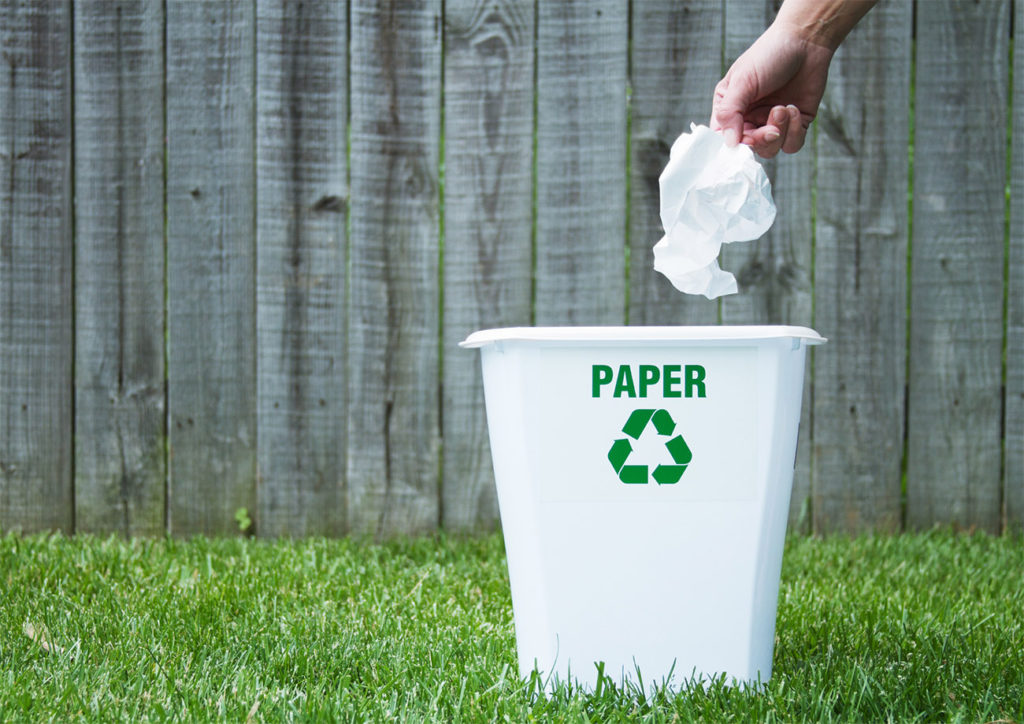Paper Recycling Companies
For the first time, paper recycling businesses will now be able to recycle single-use cups.
- The recyclable single use cup industry is transforming into a better and sustainable model.
- Major conglomerates innovate and join hands to rod the world of its plastic curse.
On a regular day, you have a lot on your mind. The destiny of your throwaway coffee cup is probably not high on your priority list. No longer be perplexed: Either you throw it in the garbage or put it in the combined paper recycling bin, that cup will most likely end up in a landfill. Yes, the cup’s paper portion might conceivably be salvaged and repurposed into something new. Therefore, many well-intentioned people put their paper cups into recycling bins. However, because single-use cups are often coated with a polyethene (PE) layer, recycling centre firms have historically found it extremely difficult to recycle them. We are happy to say that this is beginning to change.
What’s the Issue with Single-Use Paper Cups?
Close-up shows two individuals clinking single-use paper cups, which have proved challenging for paper recycling firms to handle in the past. When the cups are constructed of solely paper and are filled with fluid, they naturally become mushy, much like paper straws do when soaked. Plain paper cups aren’t very good at keeping hot beverages hot and cold drinks chilled since the paper isn’t an excellent insulator.
Manufacturers found out decades earlier that covering paper cups with a plastic layer would alleviate both of these issues. It was the perfect option that resulted in a new difficulty. To turn used paper into new paper goods, paper recycling firms must first extract the plastic coating first from paper. Annually, billions of PE-coated paper cups wind up in landfills as there hasn’t been a cost-effective solution to do so.
Some of the firms who were responsible for the waste’s creation have also invested in trying to find an answer. Starbucks and McDonald’s both are pioneers of the NextGen Consortium, a group of f&b companies whose goal is to “advance the design, development, and recovery of packaging alternatives to reduce single-use foodservice packaging waste.”

To put it another way, they’ve been looking for more environmentally friendly methods to package and deliver food and beverages
Because of their widespread use, single-use paper cups are a significant focus of the consortium’s work. Starbucks, according to its estimates, delivers roughly 6 billion cups every year. The coffee behemoth has taken steps toward conservation by offering reusable cups and, in 2016, developing a cup cover that is more readily recycled than the former lids. However, the huge majority of its paper cups are still discarded.
How Paper Recycling Businesses Figured a Way Out?
For years, paper recycling businesses and paper manufacturers have been trying to figure out how to recycle PE-coated paper cups at a cheap rate. Starbucks started a trial study in 2018 to demonstrate that this was achievable. The business delivered 25 million cups to a Wisconsin-based paper factory, where they were pulverized into a pulp and separated the plastic from the pulp with a seven-foot corkscrew. Starbucks cups were made with the retrieved fibers.
A Possibility for Paper Recycling Businesses

The issue was reproducing the operation on a wide scale. Just because it was technically possible for paper recycling firms to turn discarded cups into new paper goods didn’t mean it was economically practical.
However, we’re getting there. Georgia-Pacific started in September 2020 that its recycled paper plants in Muskogee in Oklahoma and Green Bay in Wisconsin will take PE-coated cups. The firm first tried repulping and was successful in separating the paper fibre from the plastic coating. After that, the corporation worked with its suppliers to persuade local governments to accept PE-coated cups in curbside collections. Individuals and businesses in the vicinity of the two GP mills may now recycle their single-use cups among other mixed paper trash in their recycling bins.
Georgia-Pacific is presently converting cups that were formerly destined for the garbage into repurposed napkins, hand towels, and toilet rolls after investing five years and $45 million on research and new technology. In addition, the firm is working with the NextGen Consortium to develop single-use cups with a recyclable or biodegradable covering instead of a plastic coating.
For paper recycling enterprises, these are attractive advances. By recycling some of those billions of wasted cups, manufacturers may tap into a large new supply for recovered paper fibre. Furthermore, when more facilities acquire the capacity to recycle PE-coated cups, we will feel less bad about drinking a hot beverage on the move.


